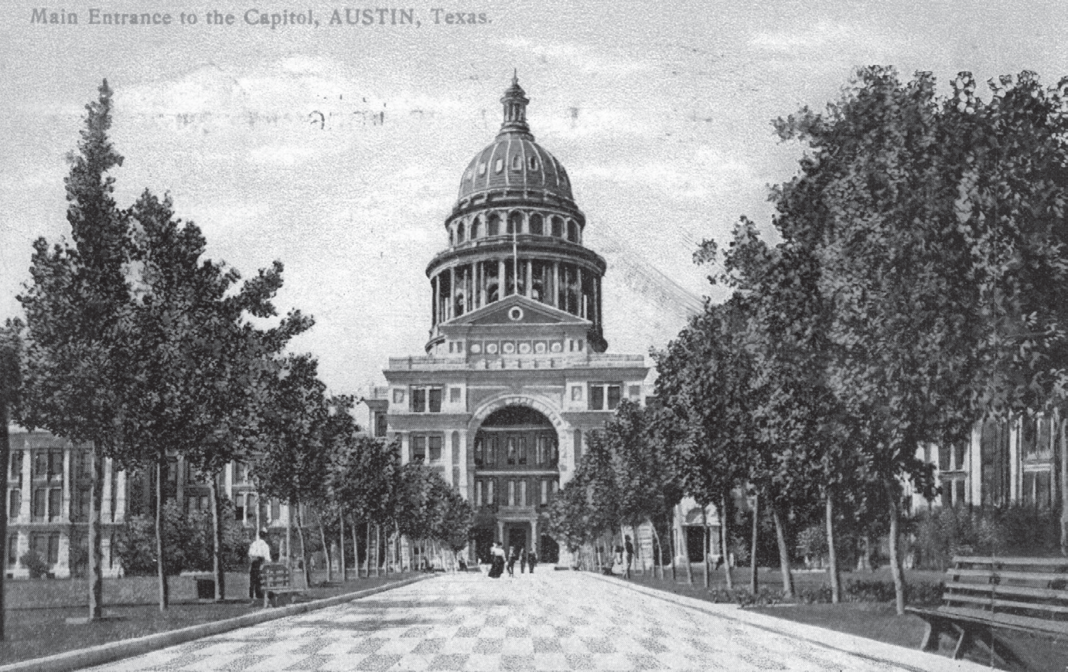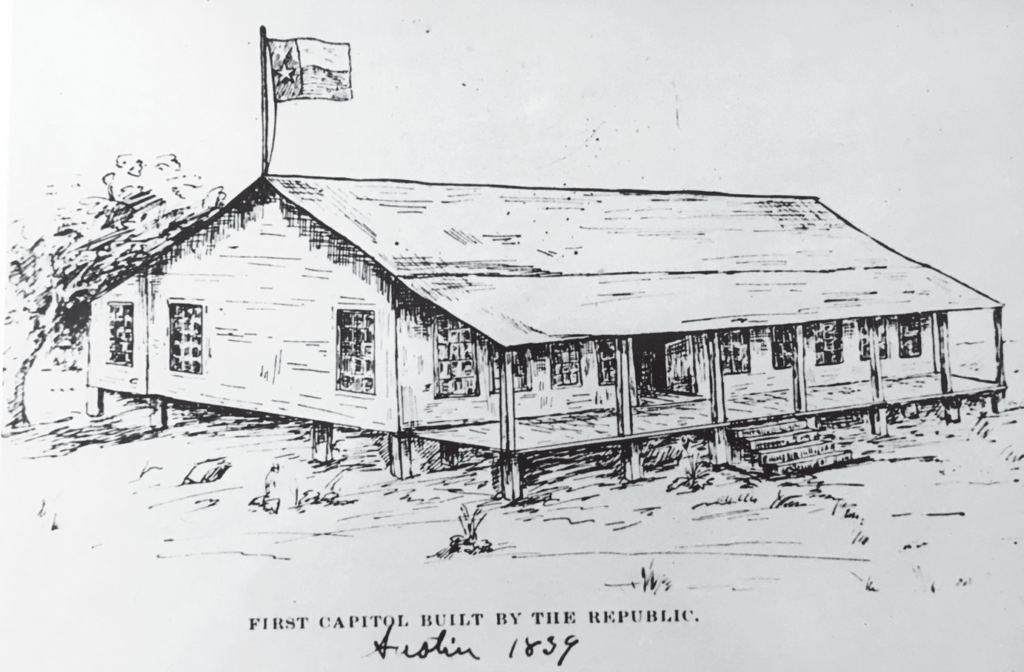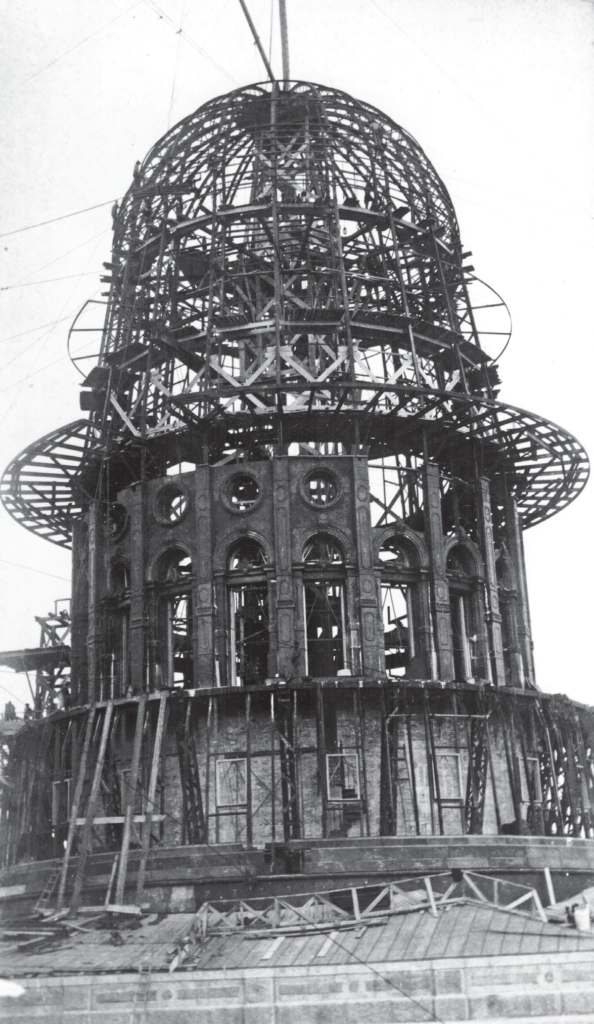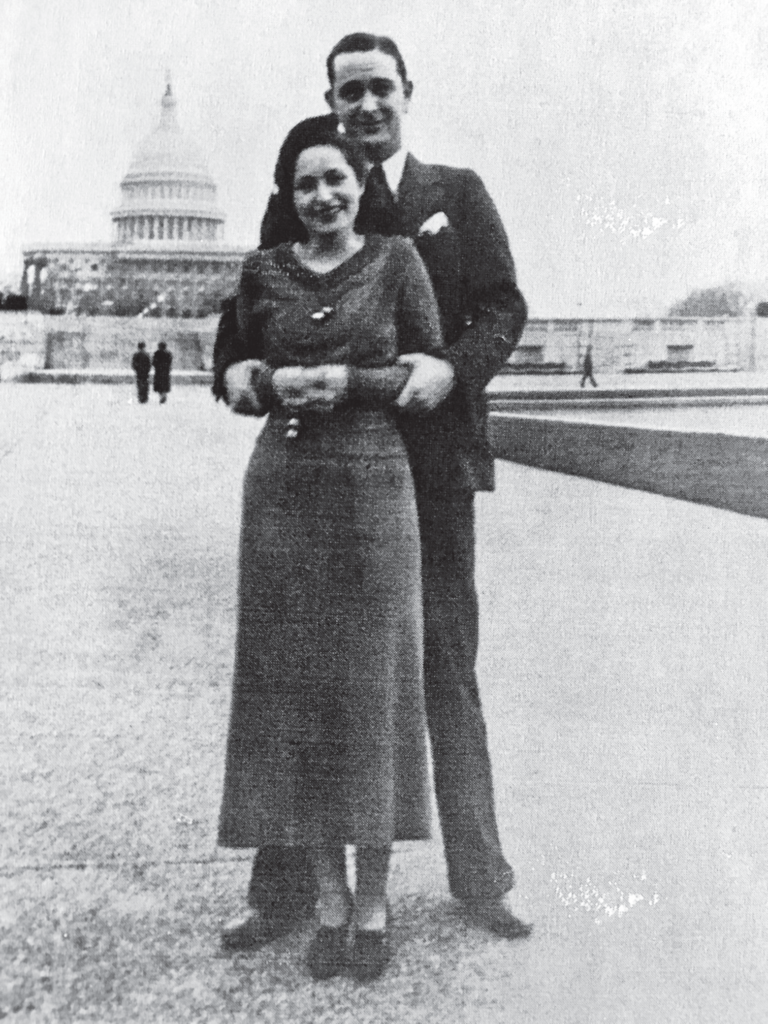
All Texans are proud of their Lone Star State, and one thing they all agree on is that Texas has the best capitol in the U.S. When the red granite structure was completed, it became the seventh-largest building in the world, even taller than the Capitol in Washington, D.C. Despite Austin’s quickly-changing skyline, the statehouse still dominates, with its grand scale remaining a durable symbol of Texas.
“The New Texas Capitol…One of the Finest State-House Buildings in the World…Constructed by a Chicago Syndicate, the Compensation Being a Tract of Land in the Lone Star State as Large as Connecticut and Comprising 3,000,000 Acres of Land—The Edifice Has Cost $4,000,000—It Will Be Dedicated in May with Imposing Ceremonies.” — Chicago Tribune, February 9, 1888

Where’s the Capital?
In 1839, second president of Texas Mirabeau Buonaparte Lamar got his wish to move the Republic of Texas capital from Houston to what is now Austin. Legislators had been grumbling about Houston’s weather from day one. First (and third) president Sam Houston would never forgive his political rival Lamar. In 1842, fearing attacks from Native Indians, President Sam Houston ordered the republic’s capital to be moved back to the city of Houston. Austinites howled and suspected the president was using this as a bid to restore the capital to his namesake town, and attempted to defend the relocation of documents. On January 1, 1843, the document defenders successfully prevented removal by firing a cannon at the rangers, and avoided bloodshed in the so-called Texas Archive War. See, librarians have heroes too!

Crooked Capitol?
During the extensive renovation following the near-catastrophic capitol fire of 1983, architects discovered something odd. Turned out that nothing in the eighteen-acre building is totally plumb or square. Some measurements found column spacing off as much as six inches. Is hand craftsmanship to blame? Maybe it was the legislature’s rush to get their new home finished.
Just a Fancy Art Museum?
The 365,000-square foot original statehouse, and the 667,000-square-foot underground extension boasts an enviable collection of Texas art. In 1887, the Texas legislature created a board to purchase commissioned portraits of all of the Republic of Texas’s presidents and state governors (dating back to the Spanish colonial era). Today, the capitol is home to 275 paintings, 175 artworks on paper, and 25 sculptures. Such famous Texans depicted in the statehouse include The Father of Texas Stephen F. Austin, Sam Houston, another with General Antonio Lopez de Santa Anna surrendering to a wounded General Sam after the Battle of San Jacinto, Alamo defender Davy Crockett, president Lyndon B. Johnson, congresswoman Barbara Jordan.

Capitol Meet Cute
University of Texas student Claudia Alta Taylor from the East Texas town of Karnack, while visiting Washington ,D.C., was given the name of a friend her girlfriend thought Taylor should meet. Taylor passed on the set-up, but fate would jump in. Months later in Austin, Taylor went from campus to the capitol to to visit a friend. When she walked in the office, she saw a tall, thin young man. She instantly recognized his name as the gent from Washington she’d previously passed on. The virtual stranger asked Claudia out, but this time she demurred in person. The next day, spotting her, he waved her down and convinced her to go out with him. That persistent gent was none other than Lyndon Johnson, future president of the United States.


